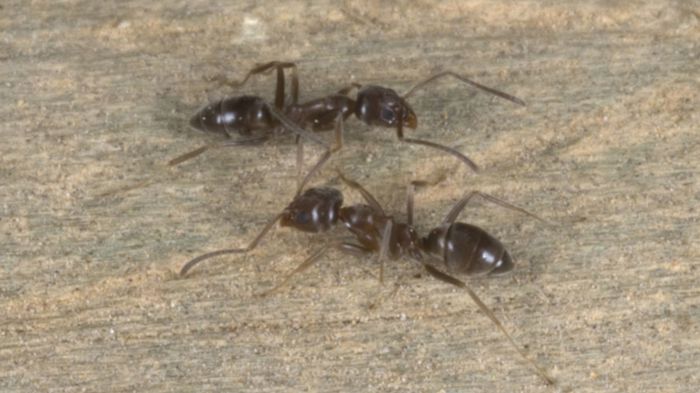Argentine ant


Argentine ant
What does it look like?
Argentine ants are only 2–3 mm long and are a uniform honey-brown colour. Foraging ants move steadily (not slowly) in defined continuous trails that can often be seen going up trees or shrubs, especially if these are flowering. The ants can't sting but some people react to their bite. They have a slight greasy odour when crushed, as opposed to the strong formic acid smell of some ant species.
Argentine ants are frequently associated with areas of human settlement but they are not entirely restricted to modified habitats. In New Zealand, Argentine ants have invaded native habitats including scrub, mangroves, coastal forest and the edges of native forest, but forest habitat appears unlikely to be utilised.
Why is it a problem?
Argentine Ants are widespread in the Northland Region. They favour sandy coastal soils and volcanic soils but have also been found in other areas, particularly in association with human activity. They are being moved around the region by people (e.g. in potted plants, beehives, soil etc.). They are not currently known to be on any of Northland's offshore islands.
Nests of Argentine ants have multiple queens and are capable of multiplying into huge numbers in a very short time.
Control methods
Prevention
- Ensure soil potted plants, outdoor equipment or other mediums which could contain ants are ant-free before moving these to other areas.
Vanguish ant bait is available from Rentokil for controlling Argentine ants, however it does not work well during the colder months as the ants diet changes to focus on carbohydrate rather than protein sources. Other options, such as Antsand, are also available for use, however controlling Argentine ants is not as simple as controlling most other ant species and a failed attempt (besides being costly) can also cause bait aversion syndrome or just spread the infestation further. Seeking advice from pest control experts familiar with Argentine ants is advised before DYI control is attempted.
The following products are available at a number of Northland retail and farm stores.
NoPests® X-it Ant™ - A non-repellent, long lasting insecticide specifically designed for New Zealand’s outdoor conditions. NoPests™ X-it Ant is effective for several months against all ant species in New Zealand including Argentine and Darwin’s ants.
NoPests® Sand4Ants - is a superior residual contact insecticide for the fast and effective control of ants, fleas, ticks and lawn pests outdoors. Designed to control major pest species of ants including the Black house ant, Argentine ant, White-footed house ant and Darwin’s ant. NoPests® Sand4Ants can be used to control pest insect problems on lawns, compost heaps, gardens, shrub areas, pot plants and the external surrounds of buildings and structures.
Available in 500g Shaker pack.
Related information
Management programme
Sustained control
Rules
More images

Photo credit: Andrew Townsend

Photo credit: Andrew Townsend

